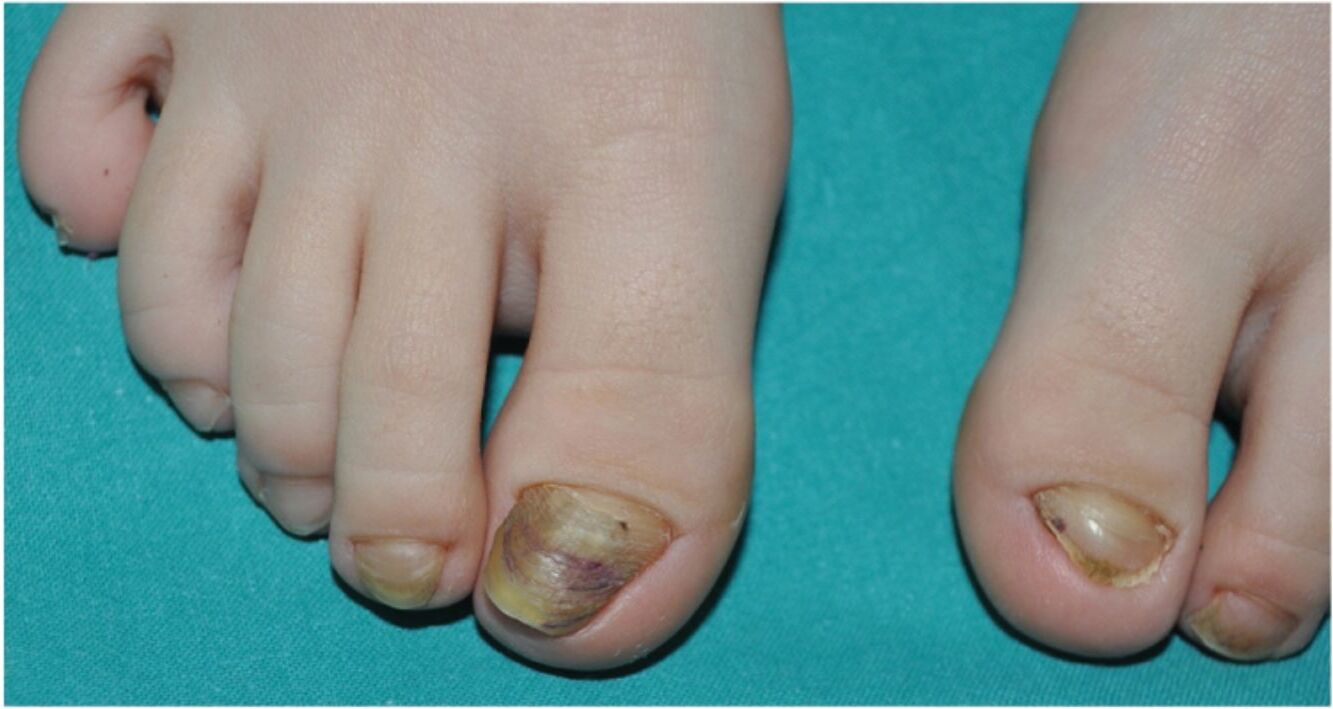
Onychonychia Hypoplastic Distal Phalanges might sound like a mouthful, but it's a fascinating topic worth exploring. This condition involves the underdevelopment of the distal phalanges, the bones at the tips of your fingers and toes, often affecting nail growth. Why should you care? Understanding this condition can help you recognize its signs, seek proper medical advice, and support those who have it. Whether you're a curious student, a concerned parent, or someone experiencing unusual nail growth, this article will provide you with 25 intriguing facts about Onychonychia Hypoplastic Distal Phalanges. Get ready to dive into the world of nails, bones, and everything in between!
Key Takeaways:
- Onychonychia Hypoplastic Distal Phalanges is a rare genetic condition affecting nails and finger bones, leading to unique challenges in daily life and requiring specialized medical management and genetic counseling.
- Understanding the genetic aspects of Onychonychia Hypoplastic Distal Phalanges is crucial for affected individuals and their families, and ongoing research offers hope for new treatments and interventions in the future.
What is Onychonychia Hypoplastic Distal Phalanges?
Onychonychia Hypoplastic Distal Phalanges is a rare genetic condition affecting the nails and the bones at the tips of fingers and toes. This condition can lead to various physical anomalies and challenges. Here are some fascinating facts about this condition.
-
Onychonychia refers to abnormalities of the nails, often involving underdeveloped or missing nails.
-
Hypoplastic Distal Phalanges means the bones at the tips of fingers and toes are underdeveloped or smaller than usual.
-
This condition is often part of a broader syndrome, such as Nail-Patella Syndrome or Genetic Syndromes involving multiple body systems.
-
Genetic mutations are the primary cause, often inherited in an autosomal dominant pattern.
-
Symptoms can vary widely, even among family members with the same genetic mutation.
How Does Onychonychia Hypoplastic Distal Phalanges Affect Daily Life?
Living with this condition can present unique challenges. Understanding these impacts can help in managing daily activities more effectively.
-
Fine motor skills may be affected due to the underdeveloped bones in fingers.
-
Grip strength can be reduced, making tasks like opening jars or holding small objects difficult.
-
Walking might be impacted if the toes are involved, potentially leading to balance issues.
-
Self-esteem can be affected, especially in children and teenagers, due to visible differences in nails and fingers.
-
Adaptive tools and techniques can help mitigate some of these challenges, improving quality of life.
Medical Management and Treatment Options
While there is no cure, various treatments and management strategies can help alleviate symptoms and improve function.
-
Physical therapy can strengthen muscles and improve coordination.
-
Occupational therapy focuses on enhancing daily living skills and using adaptive devices.
-
Surgical options may be considered in severe cases to improve function or appearance.
-
Pain management strategies, including medications and alternative therapies, can help manage discomfort.
-
Regular monitoring by a healthcare team ensures that any complications are addressed promptly.
Genetic Counseling and Family Planning
Understanding the genetic aspects of this condition is crucial for affected individuals and their families.
-
Genetic counseling can provide valuable information about inheritance patterns and risks for future children.
-
Prenatal testing is available for families with a known genetic mutation, offering options for early diagnosis.
-
Support groups and resources can connect families with others facing similar challenges, providing emotional and practical support.
-
Educational resources help families understand the condition and advocate for appropriate care and accommodations.
-
Research into genetic conditions continues to advance, offering hope for new treatments and interventions in the future.
Interesting Facts and Historical Context
This condition has been documented for many years, with some intriguing historical and scientific insights.
-
First described in medical literature over a century ago, highlighting its long-standing recognition.
-
Rare occurrence makes it a subject of interest in genetic and medical research.
-
Case studies often provide detailed insights into the condition, contributing to a better understanding of its manifestations.
-
Advancements in genetics have significantly improved the ability to diagnose and understand this condition.
-
Awareness campaigns and advocacy efforts continue to raise the profile of rare genetic conditions, promoting better care and support.
Final Thoughts on Onychonychia Hypoplastic Distal Phalanges
Onychonychia Hypoplastic Distal Phalanges might sound like a mouthful, but understanding it can make a big difference. This condition affects the nails and the ends of fingers or toes, often leading to shorter, underdeveloped nails. Knowing the signs helps in early diagnosis and better management. It’s not just about appearance; it can impact daily activities and self-esteem. If you or someone you know shows symptoms, consulting a healthcare professional is crucial. They can provide guidance on treatment options and ways to manage the condition. Awareness and education are key in dealing with Onychonychia Hypoplastic Distal Phalanges. Stay informed, and don’t hesitate to seek help if needed. Knowledge empowers us to handle health challenges more effectively.
Frequently Asked Questions
Was this page helpful?
Our commitment to delivering trustworthy and engaging content is at the heart of what we do. Each fact on our site is contributed by real users like you, bringing a wealth of diverse insights and information. To ensure the highest standards of accuracy and reliability, our dedicated editors meticulously review each submission. This process guarantees that the facts we share are not only fascinating but also credible. Trust in our commitment to quality and authenticity as you explore and learn with us.
